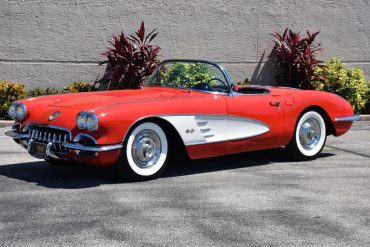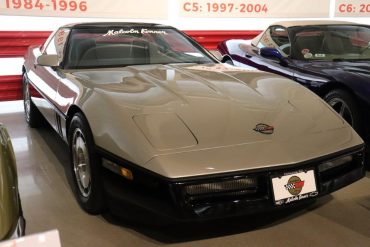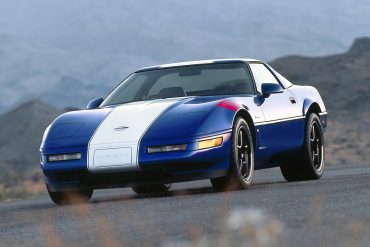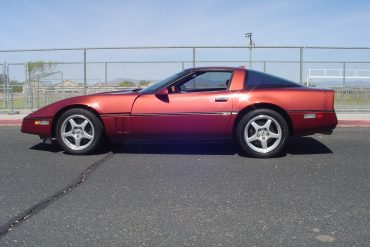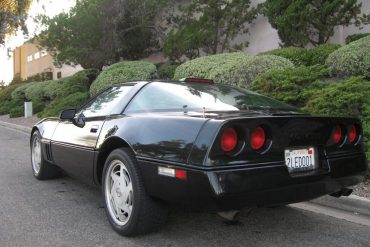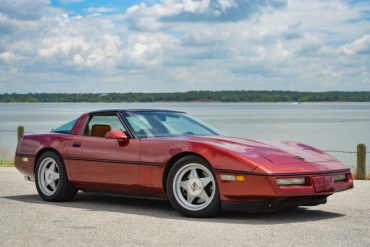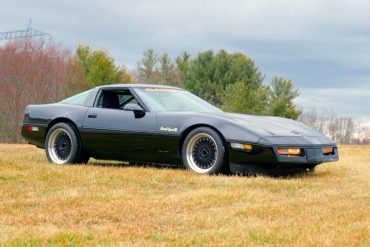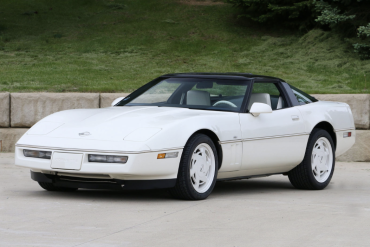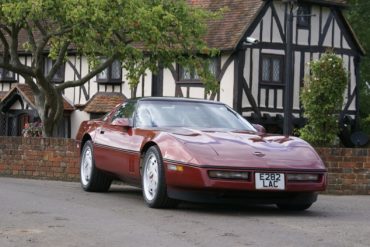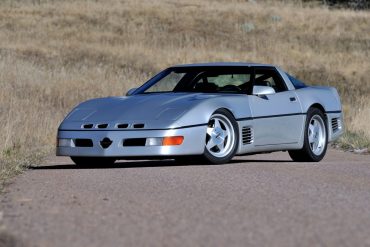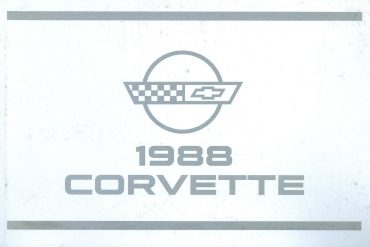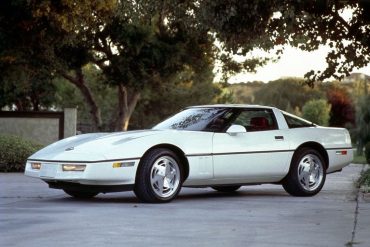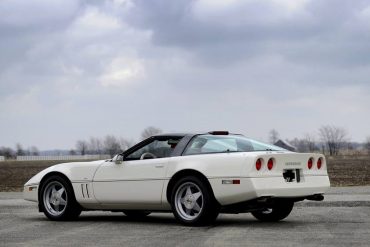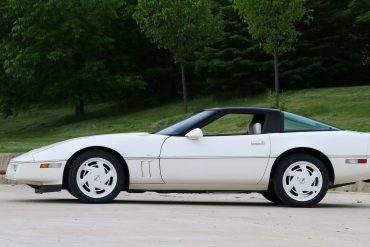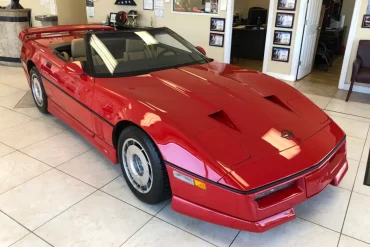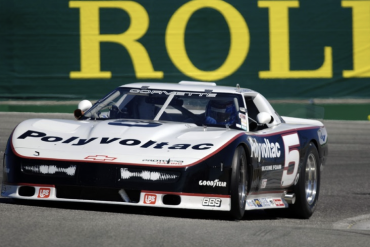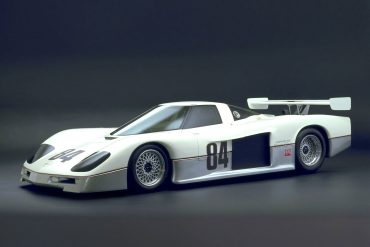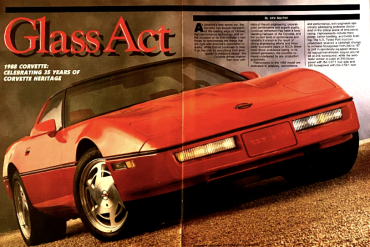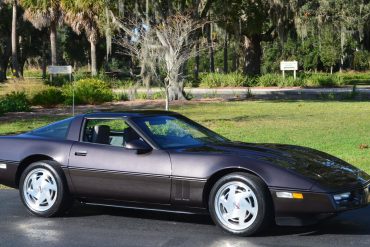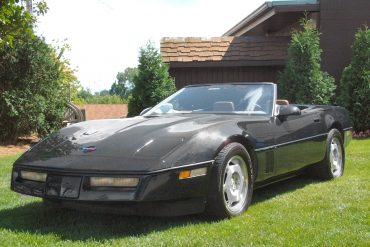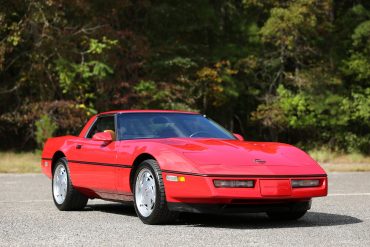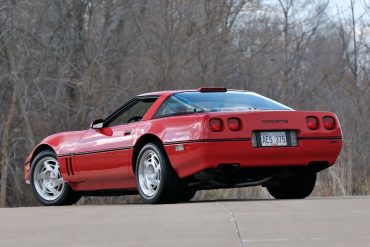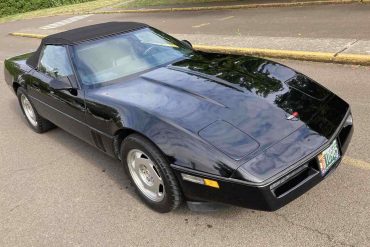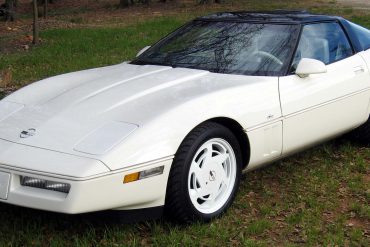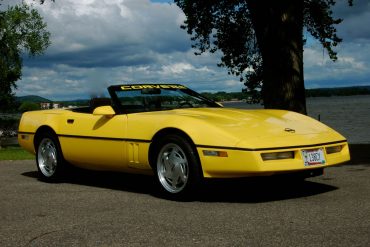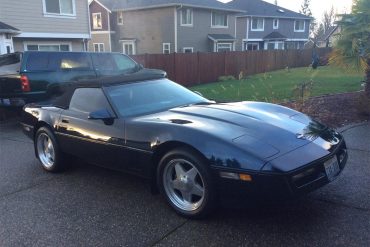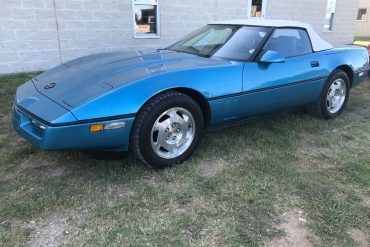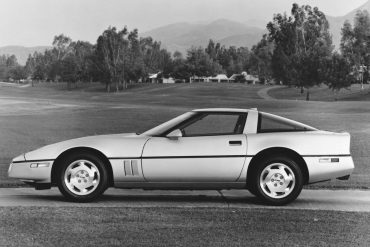Want to Know Which Vintage Corvette Will Be the Most Reliable? We Got You Covered. When the vast majority of...
After a yearlong hiatus leading to a non-existent 1983 production run, the completely redeveloped fourth-generation Corvette emerged onto the scene...
The early C4's had their problems, what with the 1984 Cross-Fire Injection and its unusual 4+3 manual transmission. By the late 1980's, the fourth-generation Corvette had evolved into a more desirable automobile, thanks in part to the arrival of the ZR-1.
In total production volumes for the 1988 Corvette was 22,789 units. For its 35th anniversary year, the Corvette was treated to a number of important engine and chassis upgrades.
1988 C4 Corvette RPO Codes, Options Codes & Order Guide If you are looking to decode your 1988 Corvette RPO’s...
This Callaway Corvette Could Be Yours By the End of the Week! Our friends at Bringatrailer.com frequently post some truly...
When Dick Guldstrand introduced the GS80 series in 1986, the car was targeted specifically at Pro-Solo and autocross enthusiasts. He knew all about the needs of these groups, as he was a longtime provider of performance upgrades for the C3 and a direct supporter of a small team of racers from the Western Council of Corvette Clubs. Up to this point, Dick had basically been a tuner. With the intro of the GS80 he was venturing into the realm of small-volume manufacturing.
While not exactly a "collector's edition" Corvette in its own right, it nonetheless has become a uniquely identifiable and collectible Corvette from the fourth-generation era. 1988 marked the 35th anniversary for Corvette, and so it was decided that Chevrolet should commemorate the milestone by introducing an anniversary-edition model. This anniversary car was the first of its kind in a decade, given that Chevrolet opted not to manufacture a Corvette in 1983.
This is no ordinary C4 coupe, but a GM Engineering test mule with VIN plate EX4607 proudly displayed in the windscreen, built in 1986 to test all the new-for-1988 features. This actual car must have spent weeks pounding round the General Motors Proving Ground at Milford, Michigan with longer runs on the road, testing all the changes for a year which saw the C4 suspension, steering and brakes vastly improved.
This Sledgehammer reached 254.76 mph at the Transportation Research Center (TRC) in Ohio and became the world’s fastest street-legal car for some time. It was built up by Reeves Callaway in Connecticut as an example of what was possible with the new ZR1 and and turbocharging its LT5 engine. The result was a 898 bhp coupe that still retained luxuries such as air conditioning and a radio. It got this power by using a NASCAR-spec block with Mahle pistons and a massive turbo.
This Owners Guide contains important information regarding the operation and maintenance of your 1988 Corvette. In order to obtain maximum enjoyment and usage from your car, we suggest that you familiarize yourself with the contents...
C4 Corvette Car Covers Corvette Gray 7 Layer Waterproof Car Cover Made for all C4 Corvettes, this car cover with...
1988 C4 Corvette Ultimate Guide. History, Production Stats & Facts, Engine Specs, VIN Numbers, Colors & Options, Performance & Much More, we cover it all.
Browse 1988 C4 Corvette pictures, photos, and images. Explore and get inspired by hundreds of interior, exterior and action photos.
Offered from 1987 to 1991, the RPO-B2K upgrade was available from any Chevrolet dealer and also Callaway’s first major Corvette tuning program. Together, GM and Callaway made the upgrade package a Regular Production Order (RPO) which was the first time GM had outsourced such an option to a specialist manufacturer. It even had a factory back warranty. As the C4 updated, so did Callway’s program and by 1988, the B2K was pushing 382 bhp and 562 ft. lbs. of torque.
The story of this Chevrolet begins with Fords - specifically, the purpose-built IMSA Mustangs and SCCA Trans Am Mercury Capris that became major forces in those series in 1984-85. In 1985, a Mustang built by Jack Roush and chassis firm Protofab took a young John Jones to the IMSA GTO crown and a Roush Protofab Mercury Capri had done the same in the Trans Am championship.
A Corvette in name only, the Corvette GTP (Grand Touring Prototype) was one of the fastest and most exotic race cars ever to wear a red Bowtie. Based on an English Lola T600 chassis and powered by an all-American turbocharged Chevy V6, the mid-engined racer was a rocketship. At full boost, the Corvette GTP's 3.4-liter (209ci) V6 pumped out more than 1,000 horsepower.
1988 Corvette Ads We have curated a cool list of all the 1988 Corvette advertisements, commercials and posters we could...
Charcoal 1988 Chevrolet Corvette We found some examples of 1988 Corvette in the Charcoal color scheme. These real Charcoal paint pictures...
Gray 1988 Chevrolet Corvette We found some examples of 1988 Corvette in the Gray color scheme. These real Gray paint pictures...
Bright Red 1988 Chevrolet Corvette We found some examples of 1988 Corvette in the Bright Red color scheme. These real Bright...
Dark Red 1988 Chevrolet Corvette We found some examples of 1988 Corvette in the Dark Red color scheme. These real Dark...
Black 1988 Chevrolet Corvette We found some examples of 1988 Corvette in the Black color scheme. These real Black paint pictures...
White 1988 Chevrolet Corvette We found some examples of 1988 Corvette in the White color scheme. These real White paint pictures...
Yellow 1988 Chevrolet Corvette We found some examples of 1988 Corvette in the Yellow color scheme. These real Yellow paint pictures...
Black Sapphire 1988 Chevrolet Corvette We found some examples of 1988 Corvette in the Black Sapphire color scheme. These real Black...
Nassau Blue 1988 Chevrolet Corvette We found some examples of 1988 Corvette in the Nassau Blue color scheme. These real Nassau...
Silver 1988 Chevrolet Corvette We found some examples of 1988 Corvette in the Silver color scheme. These real Silver paint pictures of real 1988 Chevy Corvette really show...
No More Content


